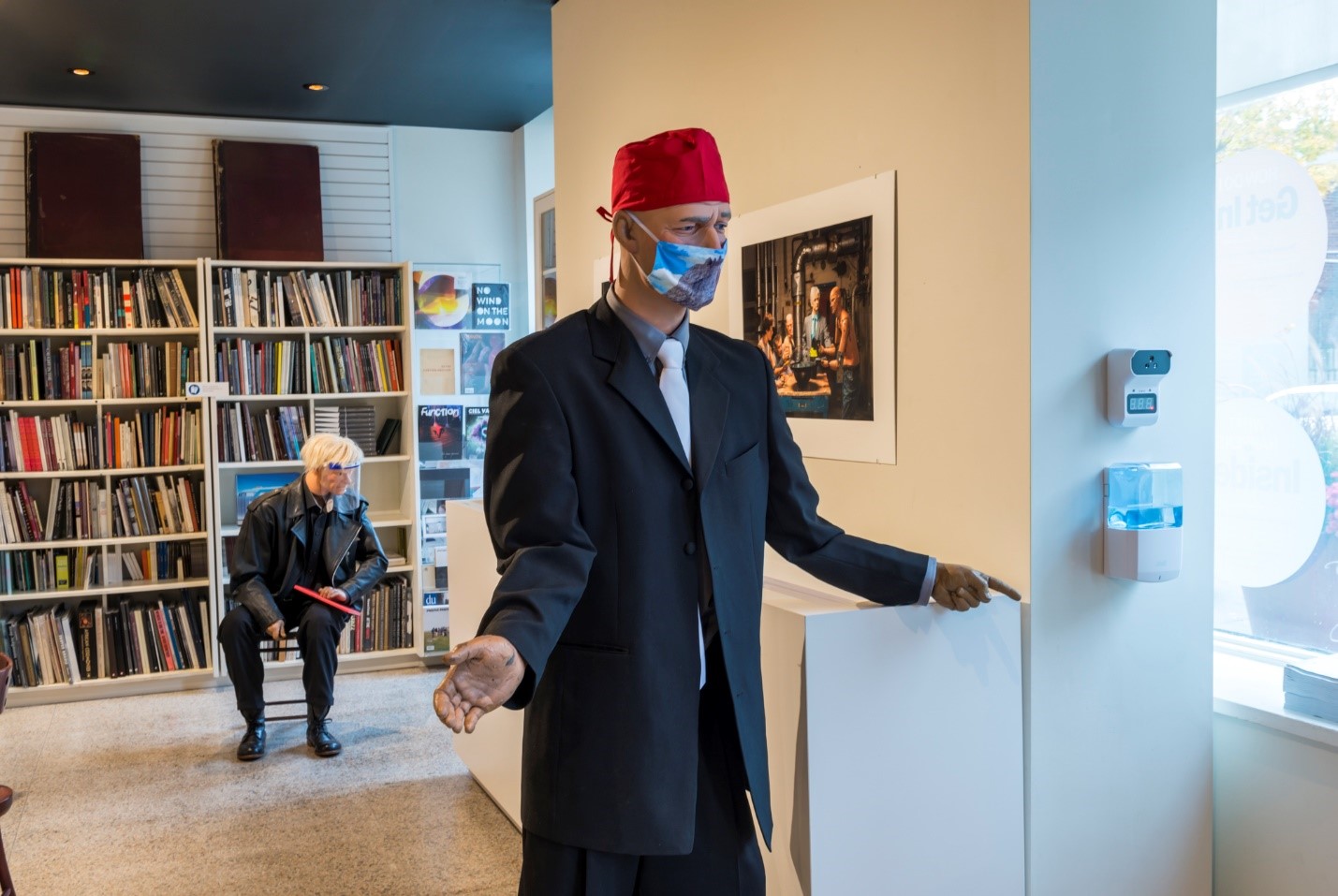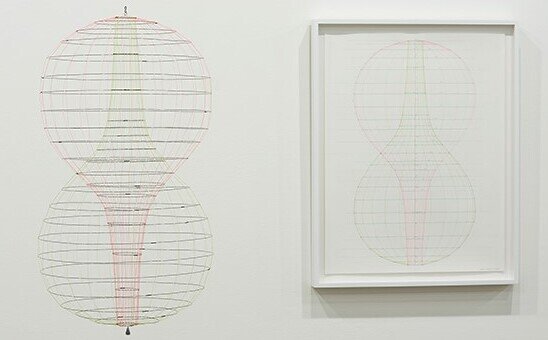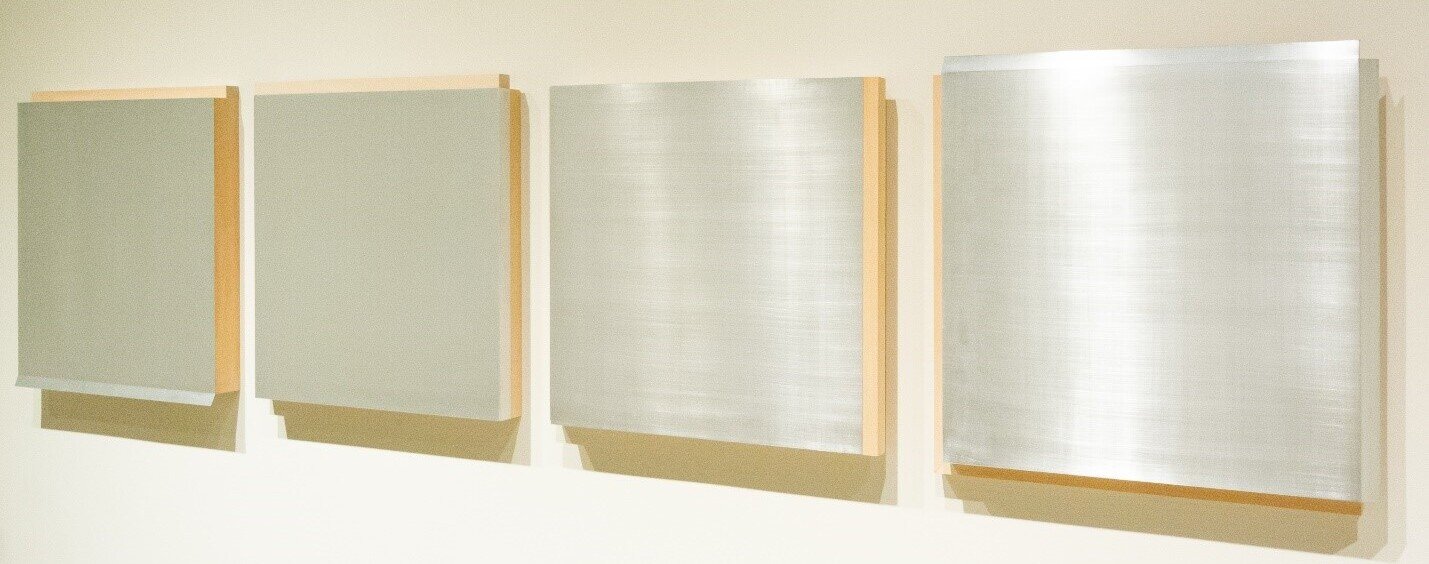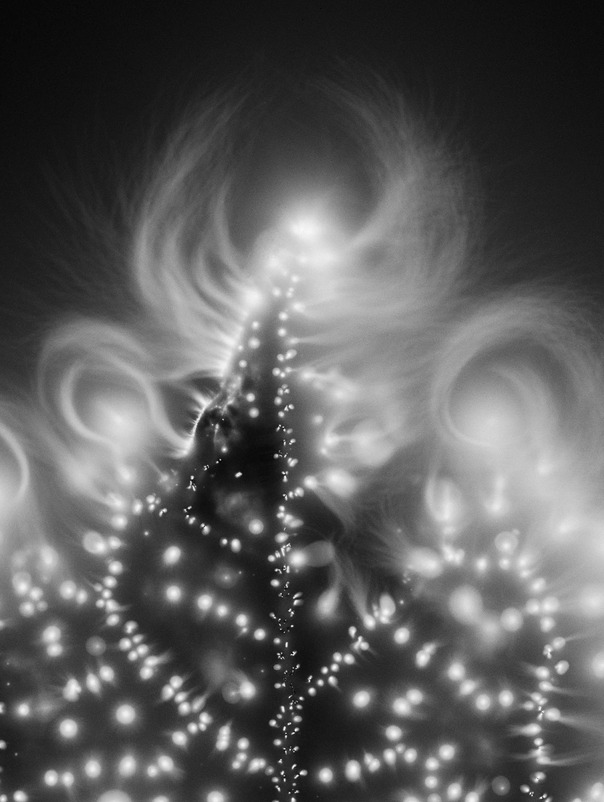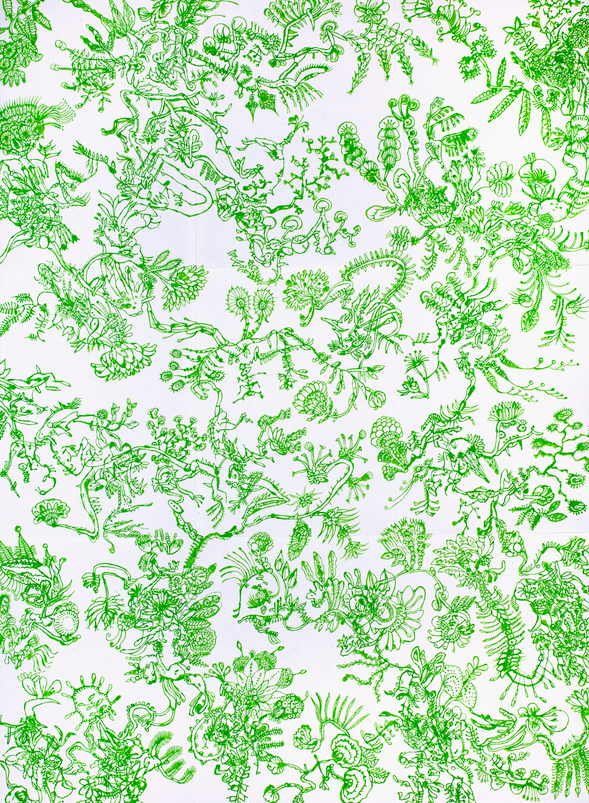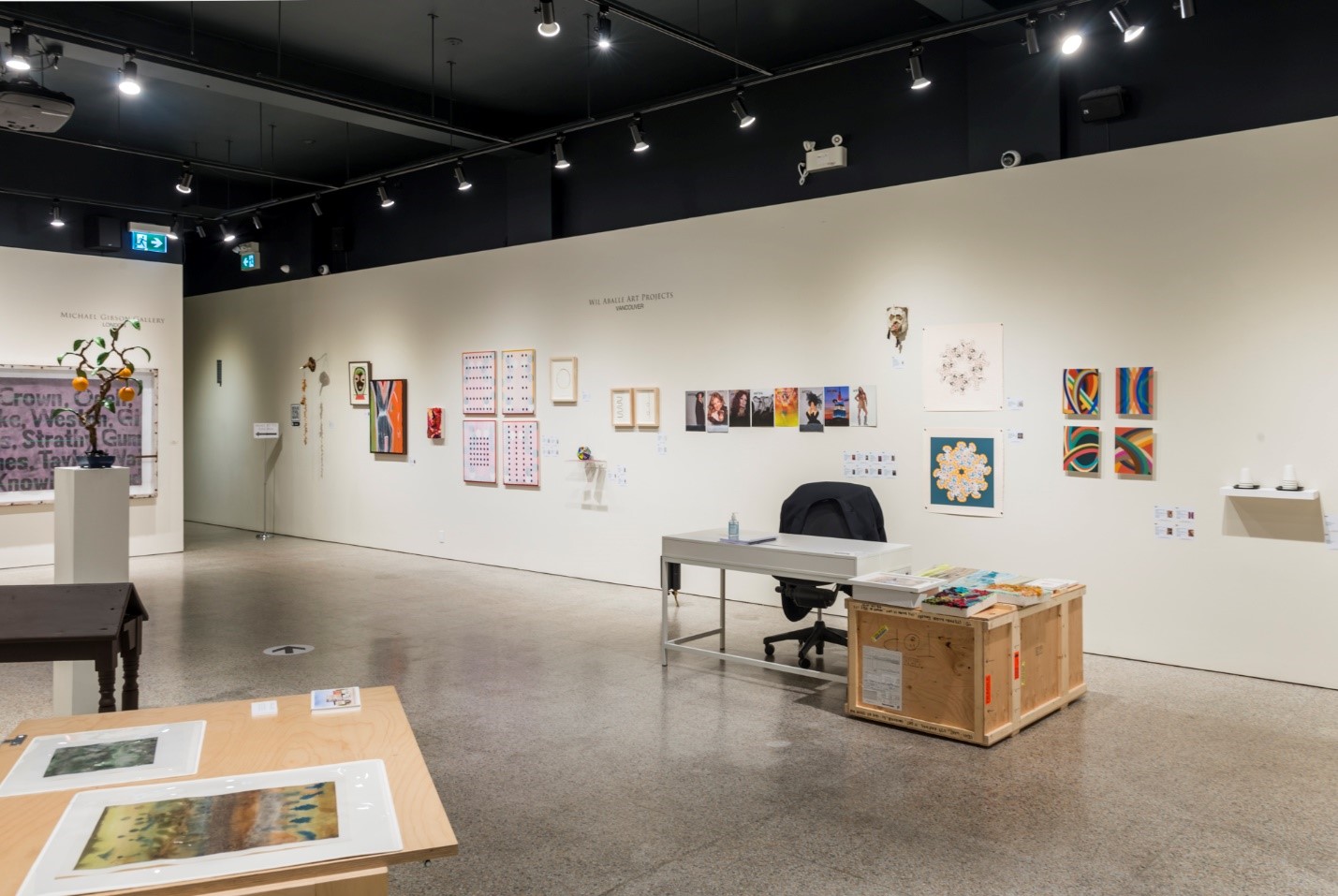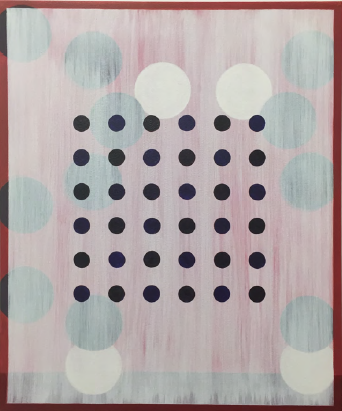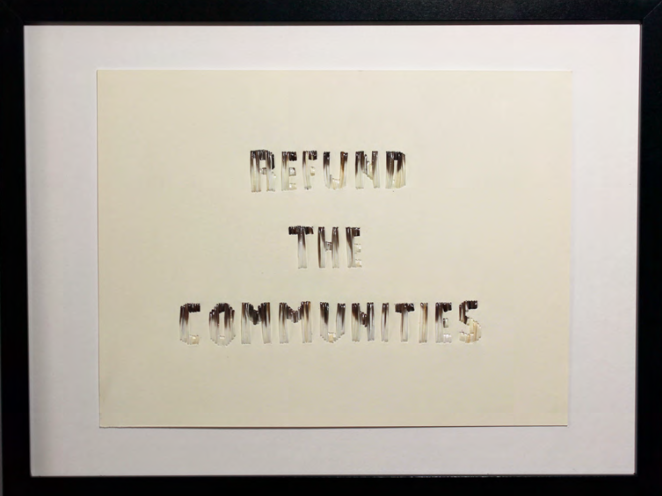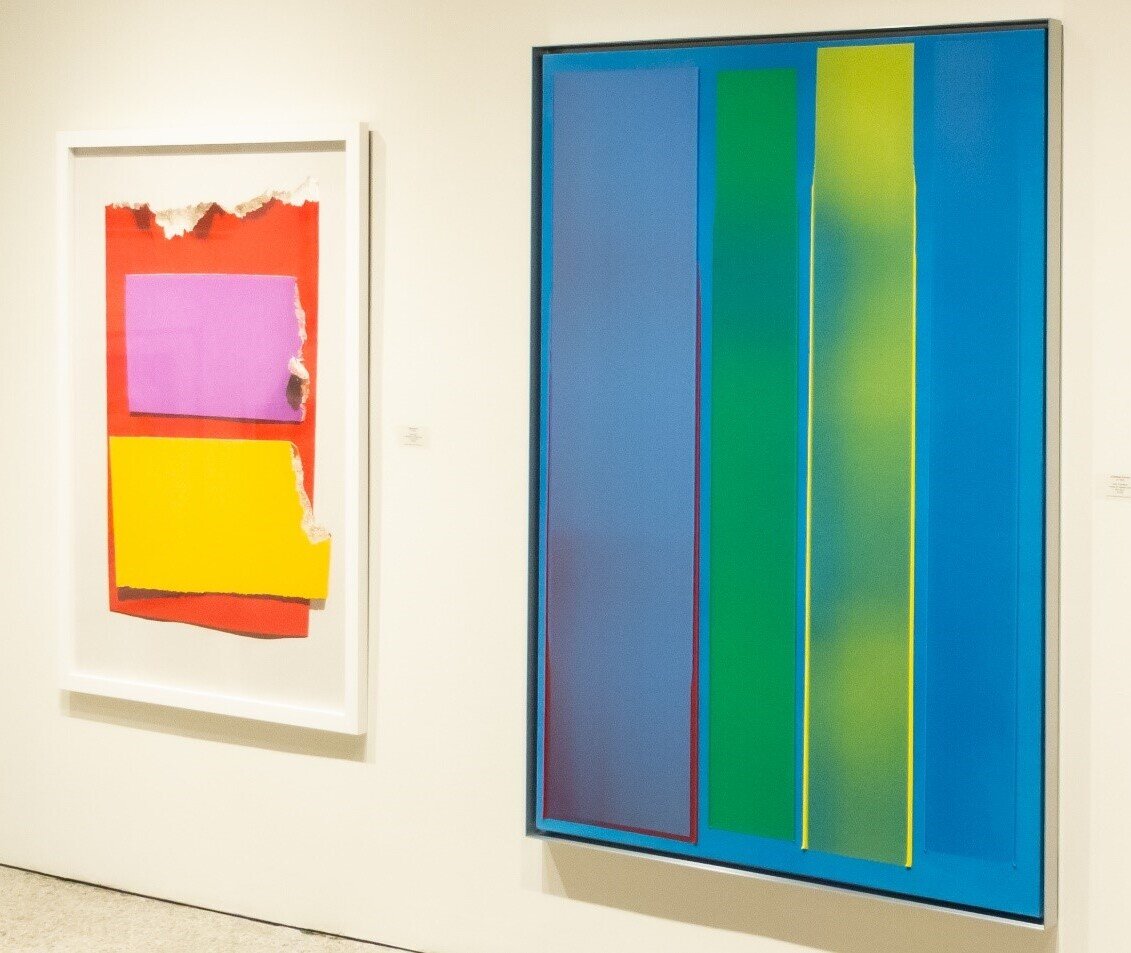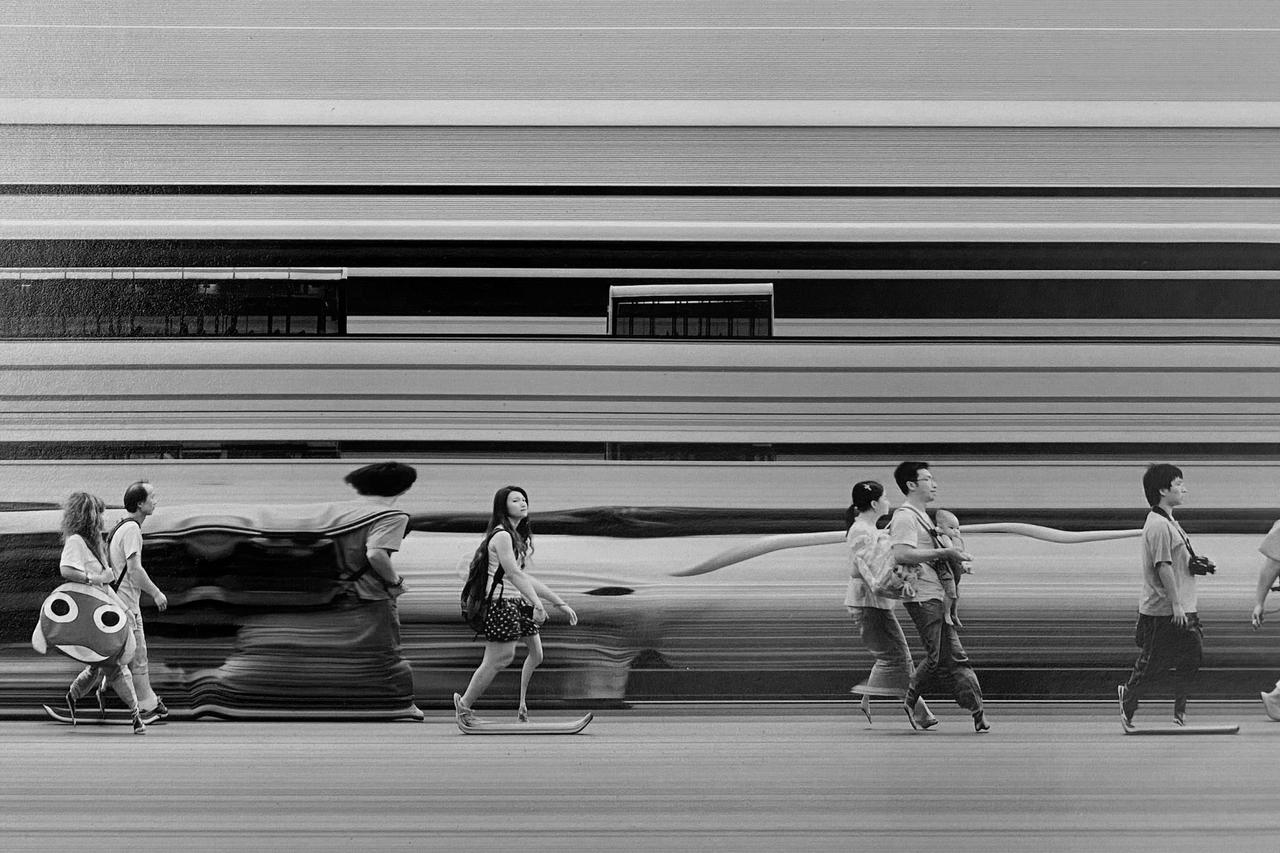Sadly, there’s no big convention centre show for Art Toronto this year (although there is an on-line version). But there’s still a chance to see some work in person. The Stephen Bulger Gallery has collaborated with four out-of-town galleries to mount a pop-up show, providing each exhibitor with an art fair type booth within the larger space.
With five galleries each showing several artists, I can only describe a fraction of what’s on display; my notes here comprise just a small sampling.
Upon arrival, I was met by Max Dean’s strange, repurposed animatronic figures; they continued to surprise and ambush me at various spots around the show.
Art Toronto pop-up show at the Stephen Bulger Gallery with Max Dean’s animatronic figures. Photo courtesy: Stephen Bulger Gallery
My first booth stop was at the TrépanierBaer gallery from Calgary. In the centre of the space hung the ephemeral, almost invisible sculpture Dynamo by Sarah Stevenson. A delicate interweaving of wire and thread, it floats like a computer-generated hologram.
Sarah Stevenson, Dynamo (Sculpture and Drawing), 2020, thread, wire and lead, 24×13.5×13.5 inches; ink and graphite on paper, 23.5×19.75 inches. Photo courtesy: TrépanierBaer
On the back wall were four panels by Stéphane La Rue. At first glance, they appeared as identical, metallic squares, but I soon realized that the edges were all different. As I got closer, I saw that these are carefully crafted wood and aluminum sculptures. The surfaces are sanded by hand. As I moved around the space, the light caught the horizontal and vertical lines which have a subtle waviness akin to painted brush-marks.
Stéphane La Rue, Open End, 2020, aluminum and wood, 66 x 66 x 283.3 cm . Photo: Mikael Sandblom
Around the corner, I found the Pierre-François Ouellette Art Contemporain from Montreal, which presented a show curated around the theme of manipulated nature. I was fascinated by Marie-Jeanne Musiol’s black and white photographs that were generated not with a camera but with plant materials, photographic paper and just a bit of high voltage. These ‘plant auras’ look like eerie nebula or strange deep-water lifeforms. Next to these hung a drawing by Ed Pien. Invasive Species is an abstract drawing that does not depict, but rather was inspired by plants and insects observed in the artist’s garden.
Marie-Jeanne Musiol, Nébuleuses végétales no 4 (Vigne), 2018, electromagnetic capture on silver gelatin negative, archival pigment print, 32 1/8 x 24 1/8 x ¾ inches. Photo courtesy: Pierre-François Ouellette Art Contemporain
Ed Pien, Invasive Species: Hanging Garden, 2020, Ink on 9-panelled paper, 35 ¼” x 27 “. Photo courtesy: Pierre-François Ouellette Art Contemporain
The next booth belonged to WAAP: Wil Aballe Art Projects from Vancouver. WAAP mounted a show that addressed the question “what’s next?” The art world, (along with rest of the world!) is in a state of flux. How does art respond to the pandemic, environmental crisis and social inequities? Here was a survey of responses ranging from contemplative abstraction to political protest art.
WAAP Pop-Up Booth. Photo courtesy: Stephen Bulger Gallery
Kate Metten represents the contemplative end of the curatorial axis with her The Thinking Eye paintings that play with our sense of perception of surface and depth.
Kate Metten, The Thinking Eye 3, 2019, oil on canvas, 24 x 20 inches. Photo courtesy: WAAP
Julia Rose Sutherland confronts us with sharp political messages Refund the Communities, Defund the Police, and Fuck the Police. Dedicated to Rodney Levi, an indigenous man shot by the RCMP, these stark words have been rendered in carefully woven porcupine quillwork, a decorative craft that pre-dates colonialism.
Julia Rose Sutherland Rest in Peace, Rodney Levi, 2020, Gawiei / Porcupine quillwork (Embroidery) on paper, 12 x 16 inches each of 3 parts. Photo courtesy: WAAP
Next was the Michael Gibson Gallery from London, Ontario. In addition to several fascinating Greg Curnoe pieces, I was taken by the work of Hans Wendt and Jonathan Forrest. Hung side by side, paintings by these two artists at first appeared to be ‘typical’ colour field paintings. As I got closer, Wendt’s work looked like torn pieces of coloured paper; closer still and I realized this was an illusion. They are tromp-l’oeil paintings meticulously executed in watercolour. Forrest’s painting also benefits from close inspection. Thin bands of bright colour protrude from the surface. These relief elements provide a clue to the artist’s process: the paint has been applied with a squeegee. The undulating shimmering effect on the surface is due to variations in the thickness of the paint caused by shifts in pressure and the raised linear elements are where the paint has spilled around the edges. Although very different, both their methods are gutsy: neither one allows for do-overs. You can’t cover anything up in water colour, and there’s only one chance to get it right with the squeegee technique!
Installation view of Michael Gibson Gallery’s booth with Hans Wendt, Res Tres, 2020, watercolour on paper, 52 1/2 x 37 1/4 inches (L) and Jonathan Forrest, Into The Blue, 2020, acrylic on canvas, 66 x 48 inches (R). Photo: Mikael Sandblom
I moved on to Stephen Bulger’s exhibition: an impressive presentation of historical and contemporary photography. I will only mention two that made a special impression on me. First was Adam Magyar’s Urban Flow 316, Hong Kong, a long, horizontal photo of a walking crowd. The background is blurred into long horizontal stripes and some elements are oddly distorted. Magyar creates his own equipment to generate his images. In this case, he has repurposed a flat-bed scanner into a ‘slit-scan’ device. What you see is what has passed through a one pixel wide camera frame.
Adam Magyar, Urban Flow 316, Hong Kong, 2007 (above) and detail. Photo courtesy: Stephen Bulger Gallery
Joseph Hartman was represented by a beautiful photograph of rounded granite shoals along the Georgian Bay shore. I recalled recently seeing very similar landscapes in John Hartman’s new paintings. I learned that the painter and photographer are related. The painter (John) is the father of the photographer (Joseph) and they share a love for the same landscape!
Joseph Hartman, Outer Shoals and Head Islands, Georgian Bay, ON, 2018, chromogenic print mounted to Stonehenge on Aluminum Composite Panel. Photo courtesy: Stephen Bulger Gallery
As I finished my tour, I once again ran into Max Dean mannequins. I should warn you that one of them can speak and they now know how to take pictures!
Mikael Sandblom
*Exhibition information: October 28 – N0vember 7. 2020, Stephen Bulger Gallery, 1356 Dundas Street West, Toronto. Gallery hours: 12 – 6 pm.
Art Toronto 2020 Pop-Up @ SBG. Galleries: Michel Gibson, London, ON; Pierre-François Ouellette Art Contemporain, Montreal; Stephen Bulger Gallery, Toronto; TrépanierBaer Gallery, Calgary, WAAP., Vancouver.

